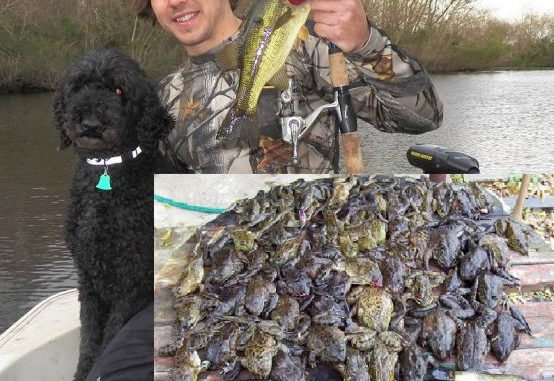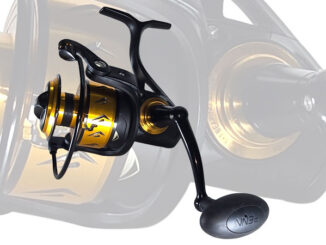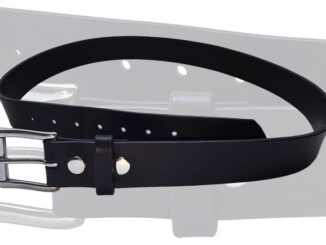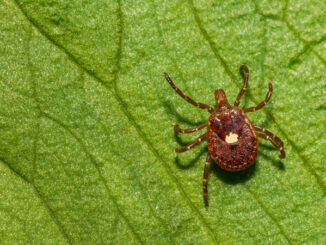
Tips for catching springtime bass, crappie and frogs.
After archery season ends I’m a sad pup. Though after putting the rod in the boat for the first time in months my tail’s a wagging. It’s time to go after those bass and frogs.
I’ve made several bass trips in the last couple weeks, easily getting my limit every time the weather wasn’t below wind-burnt-face degrees and the breeze let up howling enough to cast farther than the lure was blown back.It’s such a relief to be able to sleep later than the roosters, ensuing with that mad rush to the stand before any swamp goat arrives. These are the days when the fishing doesn’t get its best until the day wears on, with these aquatic predators getting more aggressive with each passing hour.
It’s also the best time for nights spent frogging, perfect at the start with the cold-blooded critters trying to snatch up Mr. Redpaws (a nickname my father gave crawfish) before the mud bank’s last remaining warmth dissipates. This is the only time for an empty-bellied frog to sit still longer than a second when being approached, unlike its future summer self when the scalding night will have it swamp-bound before you can blink.
My favorite days to fish are the overcast ones, as a cold front approaches. Water is rushing Gulf-ward and the barometric pressure is plunging. My favorite times to frog are the first warm nights after cold fronts have pushed through, when water still low from the north wind provides plenty of mudbank for frogs to perch upon in plain sight; and it’s a safe bet no one could’ve successfully frogged the previous few nights with the frigid temps.
To fill the chest with bass, I’ve been using the same tactics as always except I’ve come across a newfound spinnerbait, the Tornado. I’ve been using it with great success, especially in murky water on breezy days when I want to quickly cover ground. They can only be found at Bass Pro Shops, and they feature a clanking rattle on the crazy-shaped willow that allows them to buzz the surface – although I haven’t caught on them that way yet. Add that to the their unique color/glitter patterns – along with a flattened, glittery head – for a presentation that a bass has never seen in its wildest dreams.
I usually use these in chartreuse/pumpkin, black/blue or black/chartreuse. Adding some chartreuse dye to a few strains of the skirt in the black/blue Tornado is my now not-so-secret trick to trigger extra strikes from finicky fish.
My usual enticer in stained to moderately stained water is a black/blue Speed Craw. I like to fish it slowly with a 1/16-ounce weight, but when the wind kicks up a 1/8- 3/16-ounce weight is needed to get more feel.
As the water changes to its onyx swamp clarity near the end of the pocket I’m fishing, I switch over to a finesse worm – junebug/red when overcast and watermelon/red on bluebird days. Very few largemouth can resist this wiggly creature dancing over their beds.
I know when to switch lures, as the fish start nibbling just the claws of the Speed Craw instead of swallowing the bait down like a ravenous shark. But when it’s too windy to fish a finesse worm with a light 1/32-ounce weight in the clear water, I stick with the craw but change to a watermelon/red presentation.
Often, when water is whistling through the backend cuts of pockets I’ll downsize. A Beetle Spin will sometimes put a whippin’ on the biggest bass of the day. The smaller profile perfectly mimics the scattering baitfish.
I use a black/chartreuse triple-tail grub on a mini cast spooled with 8-pound line to get the job done with crappie. This grub, with a yellow crappie nibble attached, is my favorite lure when sac-a-lait fishing with my 12-foot jigging pole under a cork. I’ve been pulling up quite a few slabs this way after I get my limit of bass.
Many times after hitting a deeper stump or edge of a running trenause with my bass lure, I’ll quickly break out the jigging pole. Clean house!
The sac-a-lait really turn on during the last hour of daylight. So if you find a cut draining where you picked up a couple while fishing, return and really put a thumpin’ on them when the sunset feeding frenzy starts.
I’ve even caught a flounder this way on the north side of Lake Cataouatche this year. Catching the most succulent tasting freshwater and saltwater fish at the same time is as good as it gets!
When keeping my fish, I’m still using my red- eye trick to identify male bass and release females on days I can easily catch many fish. After several trips, no bass with red eyes had eggs, so the trick has been working like a charm.
More details of my fishing tactics at this time of the year can be found on my frogging/bass fishing article from last year.


